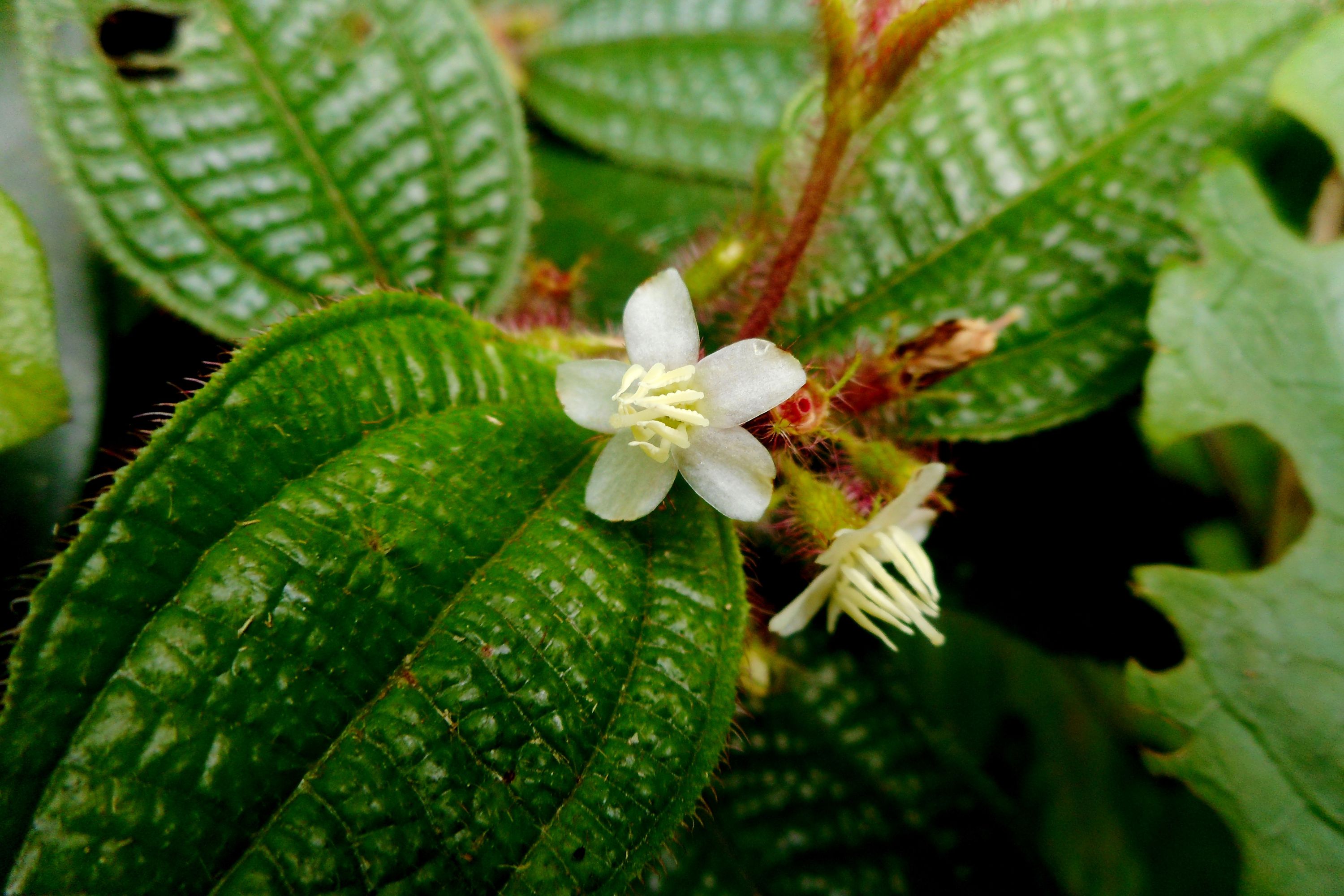Soapbush
(Clidemia hirta)

Description
Miconia crenata, (syn. Clidemia hirta), commonly called soapbush, clidemia or Koster's curse, is a perennial shrub. It is an invasive plant species in many tropical regions of the world, creating serious damage. Miconia crenata is a densely branching perennial shrub normally growing 0.5–3 m tall, but sometimes growing 5 m tall, depending on habitat. The branchlets are covered in large, stiff, brown or reddish-colored hairs. The simple leaves are oppositely arranged, oval-shaped in outline with a broad base, pointed tips, and almost entire to crenate or finely toothed margins. The leaves are also sparsely covered in hairs above, while more densely hairy beneath; and also have five distinct veins that run in an almost parallel fashion from the leaf bases to their tips. The flowers are arranged in small clusters at the tips of the branches. Each flower has five white, or occasionally pale pinkish, petals and five distinctive stamens that have a claw-like appearance. The base of the flower is swollen into a cup-shaped structure which is moderately to sparsely covered with a mixture of bristly and sticky hairs. The small, rounded fruit are berries and are either dark blue, purplish or blackish in color. Each of these berries contains over 100 light brown colored seeds. Native from tropical areas in the Americas (Mexico to Paraguay as well as the Caribbean region). This species grows in dry to wet tropical climates up to 1200 m of elevation. "Koster's curse" is a commonly used name in places where the plant grows as a noxious weed, such as Hawaii. It was introduced to Fiji in the late 1800s, likely by a coffee planter named William Parr who shared his seeds with others across the region; however the introduction was apparently misattributed by locals to a neighboring sugar planter named Köster. Other common names reported for this species are soapbush and clidemia.
Taxonomic tree:







